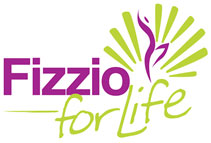Adhesive Capsulitis | Rotator Cuff Injury | Shoulder Dislocation | Subacromial Impingement | Post Surgical Rehabilitation
Adhesive Capsulitis
Adhesive capsulitis or ‘frozen shoulder’ is a condition which causes stiffening of the glenohumeral (shoulder) joint. It most commonly occurs in people between the ages of 40-60, and more often in women than men. The condition is self-limiting and resolves, on average, over 18 months.
Symptoms
- Pain around the shoulder
- Stiffness and loss of movement
What might a treatment plan look like?
This will depend on the stage of your condition, your assessment findings and individual goals. An example of a treatment plan might look like:
- Physiotherapy once a fortnight for 3-4 sessions.
- Progressing to physiotherapy every 3-4 weeks for a following 4-6 sessions.
- If required, exercise physiology sessions during the later stages of your rehabilitation to restore muscle strength
- Hydrotherapy under the guidance of a physiotherapist or exercise physiologist is useful for this condition.
Which of our team members work with adhesive capsulitis?
- All of our physiotherapists
- All of our exercise physiologists
Rotator Cuff Injury
The rotator cuff is made up of four muscles that surround the shoulder joint, and help to stabilise your upper arm bone in the socket of the shoulder. Rotator cuff injuries are common and increase with age. Many rotator cuff injuries are ‘overuse’ injuries or occur over time with repeated movement. Sometimes, a rotator cuff injury can be caused by a single incident such as a fall.
Symptoms
- A dull ache deep in the shoulder
- Pain with overhead movement and/or reaching
- Difficulty with activities such as combing hair or reaching behind the back
- May be accompanied by arm weakness and loss of range of movement
- May disturb sleep
What might a treatment plan look like?
This will depend on the severity of your injury, your clinical assessment, and your individual goals. An example of a treatment plan may look like:
- Physiotherapy once or twice a week for 2-3 weeks
- Progressing to fortnightly physiotherapy appointments for a further 4-6 sessions
- You may also work with an exercise physiologist for 2-3 monthly sessions for return to sport or activity specific strengthening exercises
- Hydrotherapy under the guidance of a physiotherapist or an exercise physiologist is useful in managing rotator cuff injuries.
Which of our team works with rotator cuff tears?
- All of our physiotherapists
- All of our exercise physiologists
Shoulder Dislocation
A shoulder dislocation occurs when the top of the humerus (arm bone) is forced out of the shoulder socket. This is usually quite painful and limits movement until the bone can be relocated. Your shoulder is the most mobile joint in the body and is able to move with a large range of motion in all directions, however this mobility comes at the cost of stability of the joint.
Symptoms
- Sudden onset of pain
- Feeling of shoulder ‘popping out’
- Loss of normal movement
- May have decreased sensation and strength around the shoulder
What might a treatment plan look like?
This will depend on the severity of your injury, your clinical assessment, and your individual goals. An example of a treatment plan might look like:
- Physiotherapy once or twice a week for 2-3 weeks
- Progressing to fortnightly sessions for a following 4-8 sessions
- 3-4 monthly exercise physiology sessions for return to sport drills and activity specific strengthening
- Hydrotherapy under the guidance of an exercise physiologist or physiotherapist is useful to manage rehabilitation from shoulder dislocations.
Which of our team members work with shoulder dislocation?
- All of our physiotherapists
- All of our exercise physiologists
Subacromial Impingement
Subacromial impingement is an umbrella term for pain which occurs in the shoulder and is localised to the subacromial space. This can occur due to rotator cuff injuries or inflammation of the bursa (bursitis). This condition usually develops over time and is more common in the elderly population.
Symptoms
- Pain with overhead movements
- Difficulty reaching hand behind back
- Decreased shoulder strength
- Difficulty with activities such as combing hair
What might a treatment plan look like?
- Progressing to fortnightly physiotherapy for a further 4-6 sessions
- Exercise physiology later in your rehabilitation for activity-specific shoulder strengthening exercises
- Hydrotherapy supervised by a physiotherapist or exercise physiologist is useful for managing Subacromial Impingement at all stages of the injury
Which of our team members works with subacromial bursitis?
- All of our physiotherapists
- All of our exercise physiologists
Post Surgical Rehabilitation
Common shoulder surgeries include rotator cuff repairs and total shoulder replacements or reverse total shoulder replacements. All of these surgeries require follow up rehabilitation to help recover your normal range of motion and strengthen the shoulder. Post-surgical rehabilitation normally commences immediately after having a shoulder surgery, depending on your surgeon’s requirements.
Symptoms
Following surgery you may experience pain around the incision site and in the shoulder, stiffness of the shoulder (particularly if your arm is immobilised in a sling post-surgery), limited range of movement and a decrease in muscle strength. These are all normal experiences however rehabilitation aims to improve your movement and strength following surgery.
What might a treatment plan look like?
This will depend on your type of surgery, clinical assessment and individual goals. Recovery after surgery can take up to 3 months depending on the individual. An example of a treatment plan might look like:
- Physiotherapy appointments 1-2 times per week for 2-3 weeks
- Progressing to fortnightly appointments for a further 6-8 weeks.
- You may then progress to exercise physiology for further strengthening of the shoulder
- Hydrotherapy under the guidance of a physiotherapist or an exercise physiologist may be useful in managing post-surgical shoulders.
Which of our team members works with post-surgical rehabilitation?
- All of our physiotherapists
- All of our exercise physiologists

